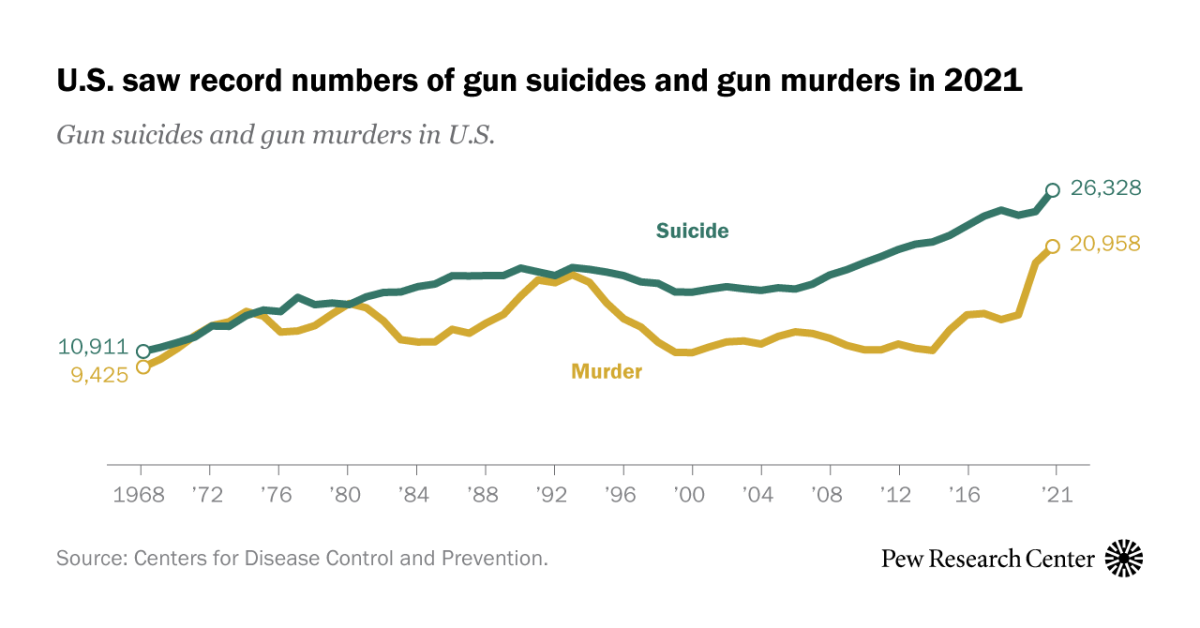I think at the very least they should be putting in the checks and procedures we have over here.
I think Australia had a similar situation to the US until they had a mass shooting and they decided to do something about it, and the mass shootings stopped. They became an exception like it would be in any other country.
@Sankari probably knows more about how it works over there?
Funnily enough, Australia already had pretty good gun laws before our big mass shooting in 1996 (the Port Arthur Massacre) and mass shootings were already extremely rare. Port Arthur was different because it had a massive death count (35) and left the entire nation reeling. I was living in Tasmania at the time, and the massacre was utterly devastating to the entire state, which is an island with a population of just 500,000. Almost everyone knew someone who was affected by it.
The biggest problem with pre-96 gun laws was that they varied considerably between states and territories, so there was very little consistency. But the Australian federal government does not have power to create nationwide gun laws, so it just had to put up with the situation.
The Port Arthur Massacre changed this because it led to a massive demand from the Australian public to tighten gun laws across the entire nation. At that time we had a very conservative federal government (the most conservative in decades) and the Prime Minister was determined to make his mark by addressing the issue. So he worked quickly to establish a bipartisan solution by negotiating with all the state and territory governments until they agreed to adopt more uniform gun laws.
The PM introduced a national firearm buyback program, under which guns that were soon to be banned under the new laws could be handed in to the federal government, which purchased them at full market rates and immediately destroyed them. Starting in 1997, a total of 650,000 firearms were purchased over 12 months. The program had a budget of $500 million, but ended up costing $367 million, which was great news for taxpayers. A 2003 buyback program (for handguns only) retrieved 68,727 firearms.
Australia has only seen 3 mass shootings since 1996, with a total death count of 16 people (including perpetrators). During that time, state and territory governments have relaxed their firearm laws to varying degrees, but consistency across the nation remains high, and the firearms banned in 1996 are still illegal. The rate of firearm ownership has also increased, contrary to predictions by gun lobbyists that Australians would be 'completely disarmed' (a completely spurious argument anyway, since unlike America, the Australian constitution has
never granted citizens the right to own and bear firearms).
So to recap the Australian situation:
* big mass shooting
* tighter gun laws
* >700,000 firearms bought and destroyed by the government
* firearm ownership increased but firearm crime did not
* no corresponding increase in non-firearm violent crime
* mass shootings remained extremely rare
AR-15 style weapons and rifles in general account for a rather small amount of the overall deaths from shootings in the US. The evidence does not support the proposition that a ban in rifles would achieve any meaningful result.
More Americans died of gun-related injuries in 2021 than in any other year on record, according to the latest available statistics from the CDC.

www.pewresearch.org
In 2020, handguns were involved in 59% of the 13,620 U.S. gun murders and non-negligent manslaughters for which data is available, according to the FBI. Rifles – the category that includes guns sometimes referred to as “assault weapons” – were involved in 3% of firearm murders. Shotguns were involved in 1%. The remainder of gun homicides and non-negligent manslaughters (36%) involved other kinds of firearms or those classified as “type not stated.”
Handguns are also the most common weapon in US mass shootings.
www.gunviolencearchive.org







